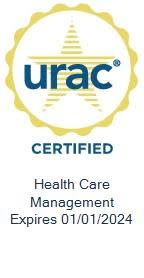We Went for It: An Interview with the Founder of Veyo
June 30, 2020
We recently sat down with Josh Komenda, the president and founder of Veyo, to ask him a few questions about how Veyo got its start, how COVID-19 has affected operations, and what’s next for Veyo!
How did you come up with the idea for Veyo?
I – and a lot of other folks at Veyo – come from a tech background. I’m a computer engineer by training and I actually got started at another well-known San Diego based company, Qualcomm. In the early 2000s, I started seeing a lot of potential for wireless technology to change the way we live and work. At around the same time, I started seeing consumer rideshare companies launch – and become really successful – with operational models that took advantage of GPS, mobile phones, and cloud computing.
Uber and Lyft were able to jump ahead of the cab companies who were still depending on fixed commercial fleets. Those cab fleets had huge overhead costs and weren’t able to respond quickly to changes in demand. What rideshare companies did–and what Veyo is doing–is use on-demand drivers to quickly address the changes in demand, while at the same time keeping overhead costs low. There’s no need to have 100 cars on the road if only 30 people need a ride.
Everyone can remember what it was like to wait for a cab 10 or 15 years ago. If it was a busy night, you might be forced to wait, or the driver might just never show up. Ridesharing changed all of that. Having on-demand drivers around meant the fleet adjusted with the demand; the supply always met the demand. In 2008 I started my first company, Go Fast Cab, and we focused on building the technology behind the on-demand model. We were acquired by Total Transit – which had experience in the non-emergency medical transportation (NEMT) field – in 2013. The two companies kind of joined forces, and we started looking seriously at how we could apply this same on-demand technology to the NEMT space – a very specific vertical that hadn’t seen any significant innovation since the 90s.
The more we studied the industry, the more opportunity we saw. The major NEMT brokers used traditional fleets and had very little transparency. No one really knew what was happening out on the roads. This led to a lot of problems, including little accountability and high costs, and because NEMT is a state program, that cost was often passed to the taxpayers.
We saw this opportunity to bring the rideshare model into the NEMT field, and with it, increased efficiency and improved operations, and we went for it.
What was the hardest part in the early stages of the company’s growth?
NEMT is a complicated industry, and there are a lot of barriers to entry. That’s why, before Veyo, there were only a handful of brokers throughout the country. We created an entirely new model for NEMT that took the benefits of rideshare companies, and merged them with the web of medical, safety and regulatory issues that come with being an NEMT broker. We had to learn – quickly – how to introduce new business models that could increase efficiency while carefully observing all of the regulations and requirements needed to be a good NEMT broker.
Because there were so few NEMT brokers operating at the time, we had to work extra hard to earn the trust of states and health departments around the country. Even though most of these NEMT brokers didn’t have perfect records, starting from scratch was still tough. That’s part of the reason why, to this day, we as a company continue to pride ourselves on our performance.
Where does the name Veyo come from?
It’s actually just a play on the word ‘Conveyance.’ Plus, we really liked the logo. It has a really cool mathematical, scientific feel to it.
Who are your biggest competitors and how do you differentiate yourself from them?
The industry as we know it was created in the 90s. But since the early days of Medicaid there was always a notion, or at least an acknowledgement, that a certain population of people had problems accessing health care. The care was available, they just couldn’t get to it. This was actually a pretty forward-thinking concept, and in a way, was the precursor to Social Determinants of Health.
Our differentiating factors are our training and our transparency. A lot of service providers would simply give receipts to the state for their trips and be reimbursed. It was just assumed that they had done the work. This led to significant issues related to fraud, waste, and abuse. There was no utilization management, no parameters, no accountability. At Veyo, our drivers are tracked through smartphone apps. Our call center employees know where the drivers are at all times. We track distance and anything else you can imagine. We know accountability is critical, so we do everything we can to provide as much relevant information as possible.
Another key differentiator is the training required by our transportation providers. All of our drivers can provide members with door-to-door service. They don’t just pick the member up at the curb. Drivers can provide specialized care to members who may have limited or restricted mobility. Drivers for our competitors – especially those in the rideshare industry making their way into NEMT – aren’t trained to handle the specific and sensitive needs of our members. In some cases, our competitors see NEMT as an opportunity for quick growth and they have jumped into it without the research. This strategy might save states some money on the front end, but it’s likely to lead to a whole new range of member issues.
How has COVID-19 changed Veyo?
Like almost every other business, we had to quickly come up with a plan to work from home. From there, we had to take a step back and look at different ways and approaches we could take to make sure our primary goal of providing reliable transportation was not negatively affected.
We serve a vulnerable population, so we’ve taken every precaution to ensure our drivers and vehicles are following all of the recommendations set out by the CDC and WHO, and we’ve modified many of our protocols, including screening members by phone, requiring all drivers to wear masks, and requiring cleaning after each trip.
In Arizona, we also have a fleet of vehicles used exclusively to transport COVID-19 positive members. Drivers are protected with additional PPE and physical barriers, there is no contact between the member and the driver, and the vehicles are sanitized after every trip. We’re working to expand this fleet in the other states where we operate.
Although we’re a medical transportation company, we’ve seen a considerable drop in ride volume. A lot of people are holding off on their doctor appointments until they feel comfortable. So, we’re using this as an opportunity to expand into new delivery options. We’ve reached out to state governments and nonprofits to let them know we’re willing to help. For example, in Connecticut, we worked closely with the state Department of Social Services (DSS) to use our existing vehicle network to deliver meals and other supplies to senior residents throughout the state. We’re looking at other ways to assist as well, like potentially driving members to test sites, or delivering dialysis machines to member homes.
What does the future of Veyo look like?
While we continue to focus on improving the NEMT model, we’re also looking at other ways to become more involved in the healthcare system and be more of a broad healthcare logistics system. NEMT will always be at our core, but we’re considering ways to take the lessons learned in this space and apply them to a wider field. Ideally, we want to become a reliable, healthcare logistics engine.
What’s something you wish you had known before you started Veyo?
I started Veyo with good intentions, and I had this idea that states and health departments would jump at the opportunity to use a more tech-based, innovative platform. What I didn’t realize was how slow moving the healthcare space is to change. The pace is for good reason: there are many more regulatory, safety, and compliance issues in the healthcare space than in the consumer space. These strict regulations are obviously a good thing, but I wasn’t fully aware of the time required to work with them.
Also, because we come from a tech background, Veyo was often viewed with a bit of skepticism. People hear ‘tech startup’ and they think ‘disruptor’ and that we’re just in it for the money. Everyone at Veyo works to prove these assumptions wrong every day. We’re committed to our members, and we’re committed to making the best, safest, and most efficient NEMT model we can. We have nearly 500 employees, all of whom work every day to make a difference and improve lives.


